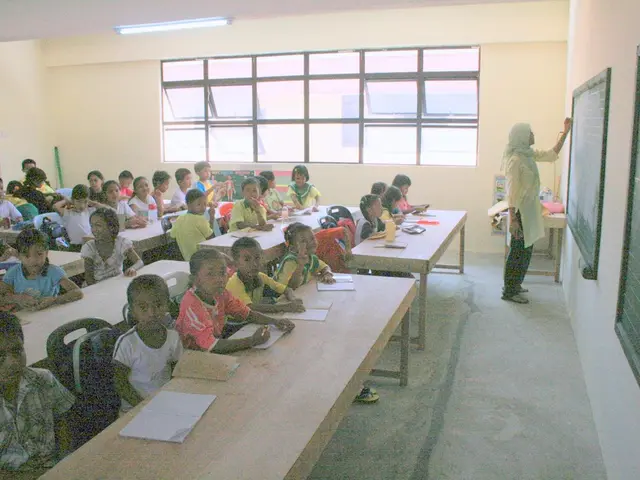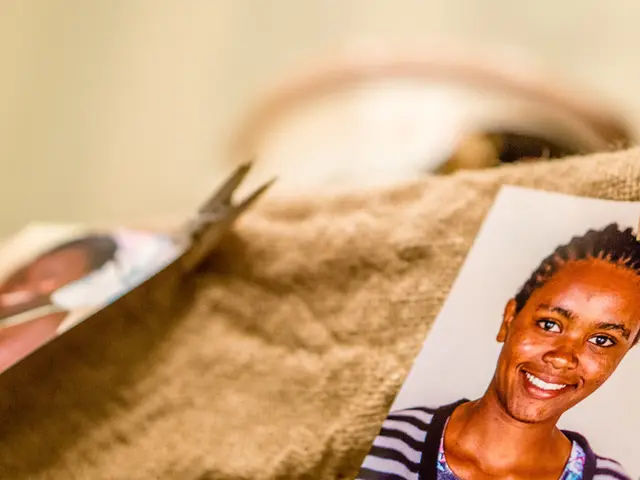"Math Education Strategy Proposed: Elisabeth Borne Unveils 'Girls in Math' Initiative"
Pumping Up the Pipeline: Elisabeth Borne's New Initiative to Encourage Girls in STEM
France's Minister of National Education, Elisabeth Borne, has announced a series of measures designed to boost the number of women in STEM (Science, Technology, Engineering, and Mathematics) fields. The goal? Inspire young girls to venture into these sectors.
© Stephane Cardinale - Corbis/Getty Images By Josephine Pelois, General news journalist
Emmanuel Macron put out a clarion call for young girls to take up STEM subjects on May 5, at the Sorbonne. The government is determined to challenge the current gender imbalance in these fields. On May 6, Elisabeth Borne, head of National Education, set a target of 50% of girls in high school math by 2030. Currently, they amount to just 42%.
Borne aims to bolster women's presence in engineering and digital sectors, stating in an interview with Les Echos that there's a shortage of over 20,000 engineers and 60,000 technicians each year. To fill this gap, we need to attract more girls, Borne asserts. "We don't want fewer boys. We just want more girls," she assured.
Borne's "girls and math" program consists of eight pillars, the first of which is to "train and sensitize" all teachers from primary to high school to gender bias and stereotypes by the 2025 school year. The gender disparity in math starts as early as the first grade. This gender gap in sciences is one of the strongest in the EU, according to international studies.
Elisabeth Borne Back in Education: A Steady Hand for Teachers?
The government also plans to experiment with classes with adjusted schedules in 4th and 3rd grade, with the aim of having 50% girls in each class. Borne promised, "We will experiment in five academies this fall before extending the program the following year."
For the baccalaureate, the overall aim is to see 30,000 more girls by 2030 choose the math specialty in the first year and maintain it in the second year, meaning 5,000 more girls per year starting in the 2025 school year. Currently, 42% of girls follow the teaching of this specialty in the second year, yet they make up only 25% of students who enter higher education leading to engineering and digital careers. This proportion has been stagnant for 20 years, the ministry explained. The plan also sets an "objective" of at least 20% girls in each scientific preparatory class in 2026 and 30% in 2030.
The government had earlier planned to introduce an anticipated mathematics exam in the first year for the next school year to sharpen the level in high school.
The focus areas around this article: education, Elisabeth Borne, high school, employment, and Industry. France has been involved in broader European initiatives and scholarships to support education and research in various fields, including STEM. For instance, France has been part of larger European efforts to promote gender equality in science and education. While specific measures from Minister Elisabeth Borne are not available, France usually supports initiatives that continue education and equality in STEM fields through scholarships and educational programs.
For detailed information about Elisabeth Borne's initiatives, consult official government sources or recent news releases.
- Elisabeth Borne's new initiative, aimed at boosting the number of women in STEM (Science, Technology, Engineering, and Mathematics) fields, includes a target of having 50% of girls in high school math by 2030.
- To fill the annual shortage of over 20,000 engineers and 60,000 technicians, Borne wants to attract more girls into these sectors.
- The "girls and math" program designed by Borne involves training and sensitizing all teachers from primary to high school to gender bias and stereotypes by the 2025 school year.
- The government's plan for the baccalaureate involves having 30,000 more girls by 2030 choose the math specialty, with the aim of having at least 20% girls in each scientific preparatory class in 2026 and 30% in 2030.




